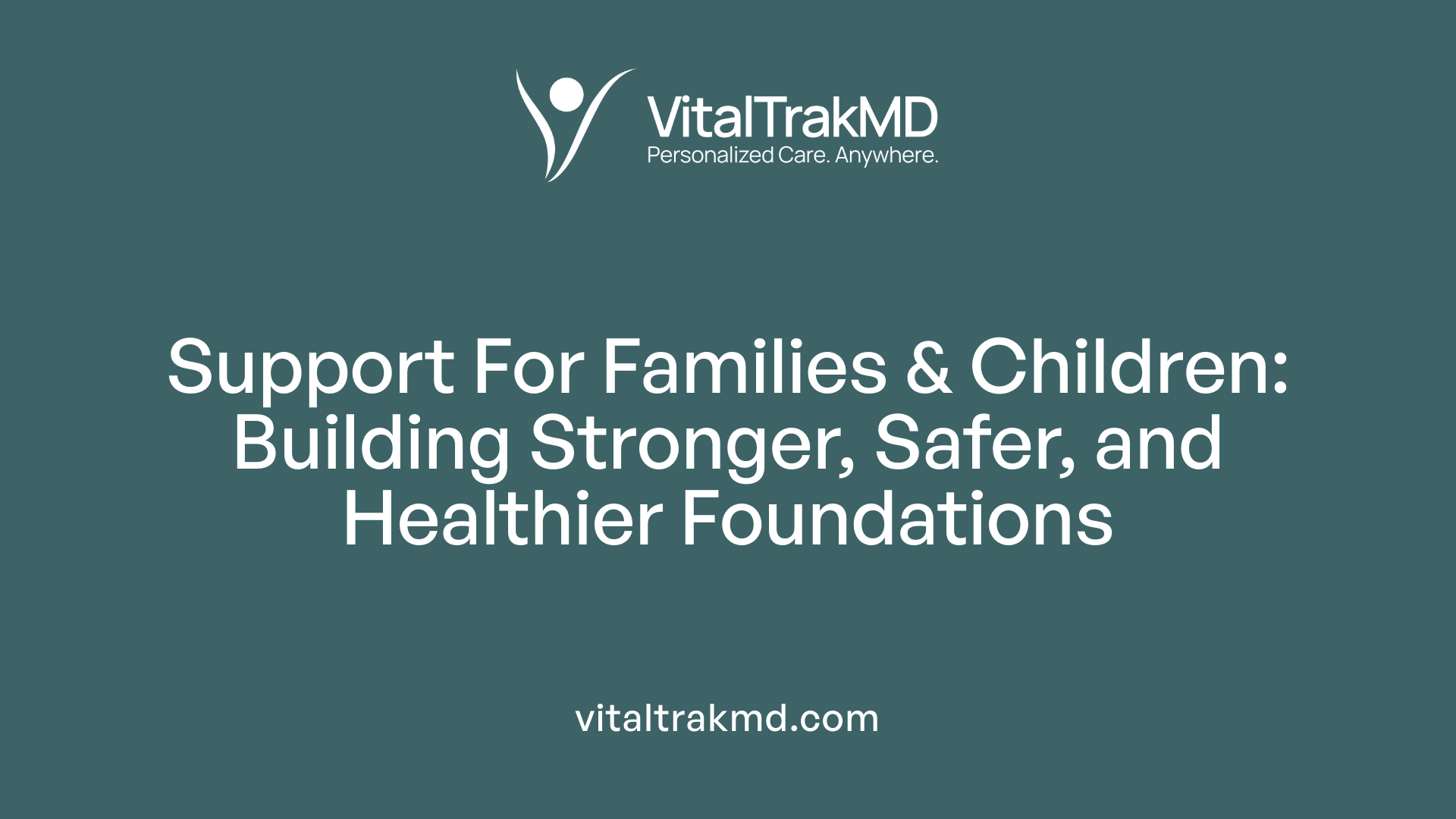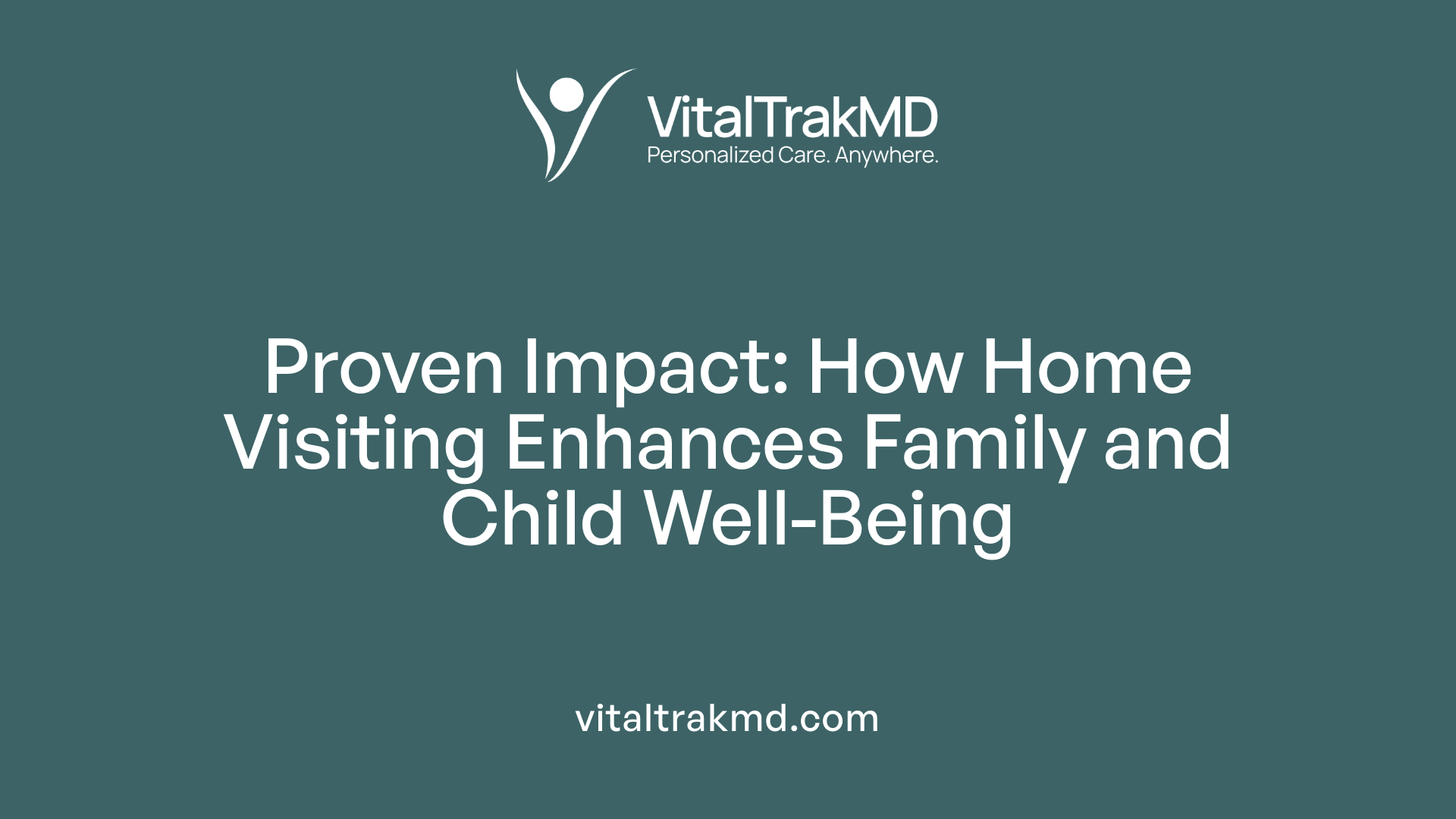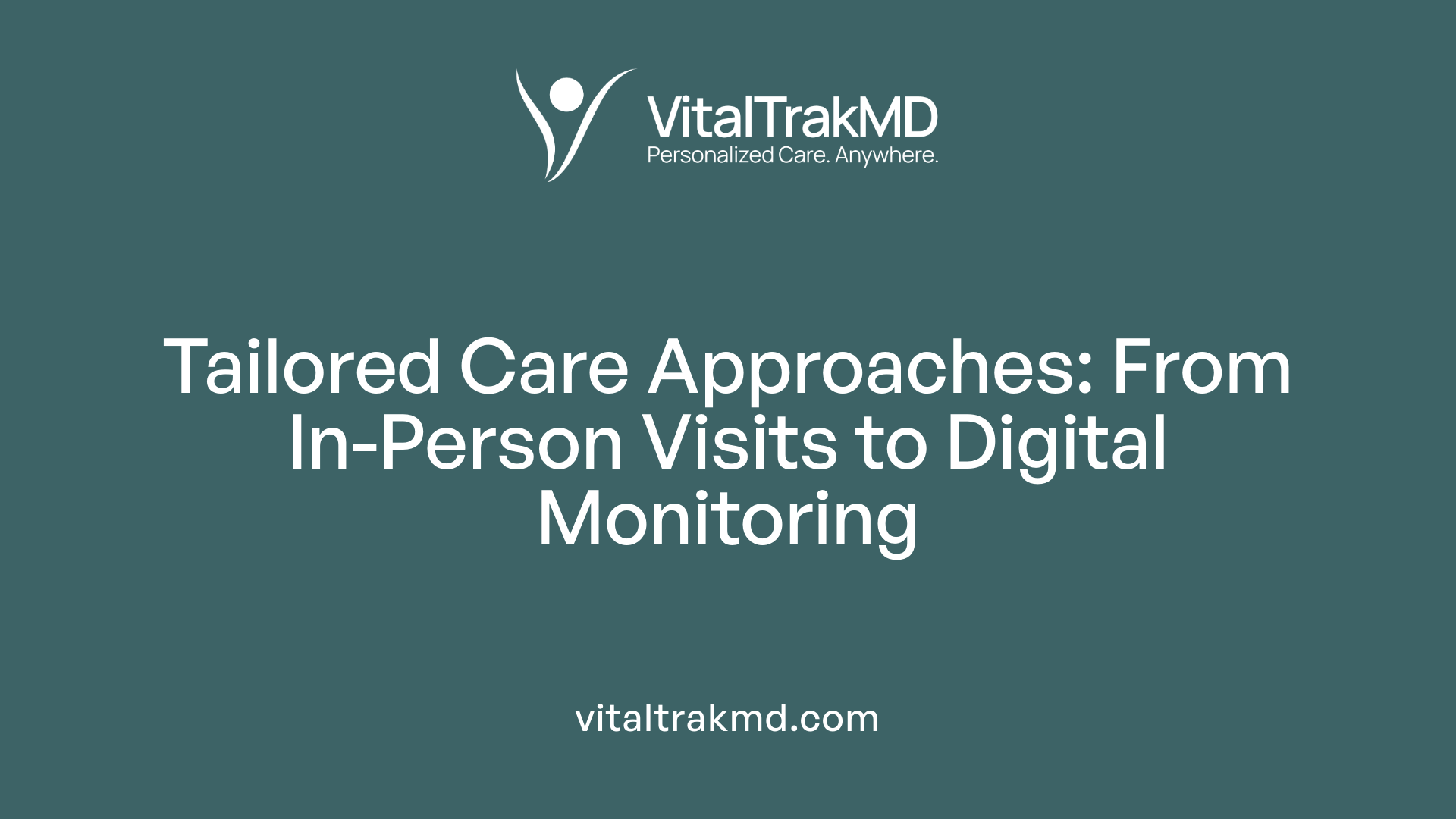VitalTrak vs Nurse Home Visit Programs

Exploring the evolving landscape of home-based healthcare models
Home visiting programs have long been a cornerstone of community health, providing crucial support to vulnerable populations such as expecting mothers, infants, and children up to age five. As healthcare shifts towards more patient-centered, cost-effective, and technology-enabled approaches, new models like VitalTrak and traditional nurse-led visits are at the forefront of this transformation. This article compares these paradigms, evaluating their components, benefits, limitations, and supporting evidence to inform stakeholders about their application in diverse settings.
Core Components and Service Models

What are the key components involved in a typical home visit?
A standard home visit usually covers essential aspects to promote family health and well-being. These core elements include medication reconciliation, clinical assessment, patient and caregiver education, fall assessment, socioeconomic assessment, and nutritional status evaluation. These components are performed in over half of the visits, ensuring a comprehensive review of the family’s health needs.
In addition to these foundational services, there is an increasing focus on proactive strategies such as Readmission Prevention and efforts to prevent hospitalization for chronic diseases. Healthcare reimbursement models are shifting towards capitated payments, encouraging providers to prevent avoidable hospital stays.
As healthcare delivery continues to evolve, future home visits are expected to encompass more preventive and management strategies. This includes detailed evaluations aimed at avoiding admissions, managing chronic conditions proactively, and addressing behavioral health issues.
With the increasing complexity of patient needs and inpatient volumes, the demand for home-based healthcare services is projected to grow substantively. This growth will likely expand to encompass home-based evaluations, hospice care, therapy services, and other outpatient community care options. The current trend underscores a move towards more holistic, preventive, and patient-centered home visiting models.
Benefits for Families and Children
 Home visiting programs are instrumental in supporting the health and development of both families and children. These programs have demonstrated their ability to foster improved child development outcomes, ensuring children acquire critical skills that prepare them for school and future life challenges.
Home visiting programs are instrumental in supporting the health and development of both families and children. These programs have demonstrated their ability to foster improved child development outcomes, ensuring children acquire critical skills that prepare them for school and future life challenges.
Offering essential health promotion services, home visits often include prenatal education, breastfeeding support, and postpartum care, which contribute to healthier birth outcomes. Expectant and new mothers receive guidance on nutrition, emotional well-being, and safe practices, leading to stronger maternal health and decreased risks during pregnancy.
A significant advantage of these services is their role in reducing safety risks such as injuries and instances of child maltreatment. Family Support Specialists and public health nurses work closely with families to identify potential hazards, educate on safety measures, and connect families to necessary resources.
Beyond health and safety, home visiting programs strengthen family stability and promote economic self-sufficiency. By providing parents with parenting tips, social support, and assistance in accessing community benefits, these programs increase parental confidence and help build resilient, nurturing home environments.
Furthermore, research shows that high-quality home visiting is cost-effective in the long run. It reduces expenditures related to healthcare, early childhood education, child protection, and social services, leading to substantial savings for society.
Overall, home visiting programs support families in creating safe, nurturing environments—thereby promoting healthier childhoods, better educational outcomes, and stronger family units that contribute positively to community well-being.
Evidence Supporting Efficacy and Outcomes

What evidence supports the effectiveness of home visiting programs like VitalTrak and traditional nurse visits?
Research consistently demonstrates that home visiting programs significantly improve outcomes for children and families. Notably, efforts such as the Nurse-Family Partnership (NFP) and Healthy Families America have shown impressive results in enhancing child health and safety. For example, studies reveal a 48% decrease in substantiated reports of child maltreatment among families enrolled in these programs. Children in such programs also experience better immunization rates, fewer developmental delays, and improved behavioral health.
These programs also benefit maternal outcomes. Mothers participating in nurse-led visits gain better parenting skills, experience improved mental health, and are more likely to engage in regular prenatal and postpartum care. Cost analyses further support their value, with some studies indicating that every dollar invested in home visiting yields up to $5.70 in savings, primarily through reductions in emergency services, hospitalizations, and foster care needs.
Federal reviews, such as the Home Visiting Evidence of Effectiveness (HomVEE), recognize multiple programs as evidence-based, confirming their capacity to foster safer, healthier environments. Overall, the substantial body of evidence underscores their role in fostering positive, long-term impacts on child development, family stability, and community well-being.
Target Populations and Delivery Methods

How do the scope, target populations, and service delivery methods differ between programs like VitalTrak and traditional nurse home visitation services?
Traditional nurse home visiting programs, such as the Nurse–Family Partnership (NFP), primarily focus on supporting low-income, first-time pregnant women and their infants through in-person visits conducted in family homes. These visits typically span from pregnancy until the child reaches two years of age and include health education, developmental assessments, and resource referrals.
In contrast, programs like VitalTrak expand the approach by integrating remote therapeutic monitoring (RTM) and remote patient monitoring (RPM) technologies. While traditional services rely heavily on face-to-face, in-home interactions, VitalTrak utilizes digital platforms to monitor patient progress remotely. RTM enables health professionals like physical, occupational, and speech therapists to track self-reported therapy adherence and progress asynchronously. RPM, on the other hand, collects physiologic data such as blood pressure and respiratory flow automatically, often for clients with chronic conditions.
These differences extend to target populations and service scope. Traditional programs often serve families with specific needs related to pregnancy, early childhood development, and low-income status, primarily through direct, hands-on care. VitalTrak’s model broadens this to include individuals with chronic health conditions who benefit from remote, continuous health monitoring and intervention.
Program Scope and Demographics
| Program Type | Typical Participants | Service Focus | Delivery Mode | Duration |
|---|---|---|---|---|
| Traditional Nurse Visits | Low-income, pregnant women, infants, children | Maternal health, child development, family support | In-person, home-based | From pregnancy to child's age 2 |
| VitalTrak | Patients with chronic conditions, therapy needs | Chronic disease management, therapy adherence | Remote, digital platforms | Varies, often ongoing |
Broader Community and Service Integration
Traditional programs are often rooted in community outreach with a focus on early intervention and family support. VitalTrak emphasizes integration with healthcare systems for continuous remote management, expanding access through technology.
In summary, while traditional nurse home visitation programs emphasize personal, community-based, early childhood and maternal health support, VitalTrak leverages digital health tools to extend care scope, reach broader populations, and facilitate ongoing management of chronic conditions.
Advantages, Limitations, and Decision-Making Factors

Program advantages and limitations
The Maternal, Infant, and Early Childhood Home Visiting (MIECHV) program provides valuable support through various evidence-based models, including Nurse–Family Partnership (NFP), Healthy Families America, and Parents as Teachers. One major advantage of these programs is their focus on early intervention, targeting families with young children to promote healthy development, improved maternal health, and safe environments. The NFP, in particular, has demonstrated positive outcomes over 30 years.
Choosing the Right Model for Community Healthcare
Both VitalTrak and traditional nurse home visit programs play vital roles in delivering community healthcare, but their applicability depends on specific community needs, resource availability, and desired outcomes. VitalTrak offers a technologically advanced, flexible approach suitable for chronic disease management and broader populations, especially in remote or underserved areas. Traditional nurse-led services excel in delivering personalized, culturally sensitive care with immediate clinical assessment and intervention capabilities, particularly for high-risk or vulnerable families. As healthcare systems evolve, a hybrid model combining the strengths of both approaches may provide the most comprehensive, accessible, and effective care, ensuring that the diverse needs of communities are met efficiently and sustainably.
References
- Maternal, Infant, and Early Childhood Home Visiting
- Maternal, Child, & Adolescent Health & CA Home Visiting Programs
- Maternal, Infant, & Early Childhood Home Visiting
- Home Visits and the Use of Routine and Emergency Postpartum ...
- Home Visit Programs - Tillamook County Community Health Centers
- Health Department Announces New Home-visiting Services for First ...
- Why Home Visiting?
Recent articles
Want to Feel Better and Live Healthier?
Join hundreds of patients taking control of their health with personalized care that fits their life – not the other way around.
Rated 4.8/5 by 32+ customers







